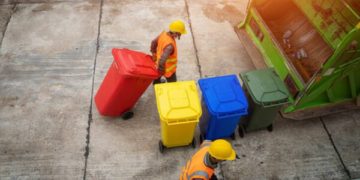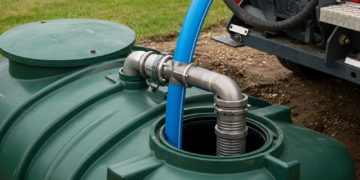You’re probably tired of bins overflowing at home and at work, yet fancy ‘green’ gadgets often cost more than the mess is worth.
Instead, you can rethink habits, reuse materials, and, when bulk clutter piles up, browse community-based services such as Dirt Cheap Rubbish Removal to compare disposal options.
The ideas ahead focus on keeping waste under control without draining your wallet or complicating your routine easily each day.
Mastering Waste Hierarchy
Understanding the waste hierarchy empowers daily choices, guiding actions toward prevention, then reuse, recycling, recovery, and finally safe disposal when nothing else works.
Start With Prevention
Choose products with minimal packaging, refill containers, and borrow seldom-used tools; each decision cuts incoming material before it becomes a burden.
Prioritize Reuse
Repurpose glass jars for pantry storage, donate electronics for refurbishment, and repair furniture instead of replacing it to extend useful life.
Recycle Correctly
Study local guidelines, rinse containers, and bundle paper properly; doing so keeps materials valuable and supports markets that depend on clean feedstock.
Source Reduction Tactics
Small, deliberate changes across shopping, cooking, and organizing habits reduce waste volume quickly and save money without sacrificing comfort or convenience.
- Plan purposeful shopping. Draft detailed lists, avoid impulse buys, and favor bulk sections to prevent surplus that spoils or becomes clutter.
- Embrace digital receipts. Opt-in at checkout, store confirmations in cloud folders, and cut endless paper streams that overwhelm drawers and landfills.
- Switch to concentrate. Purchase refill tablets for cleaners, dilute at home, and eliminate repeated plastic bottle purchases throughout the year.
- Share seldom-used gear. Join neighborhood libraries of things, lending platforms, or office equipment pools to minimize duplicate ownership.
Track savings monthly; the resulting lower disposal fees and reduced purchasing prove that cutting waste at the source pays tangible dividends.
Streamlining Recycling Systems
A unified, transparent recycling system removes confusion, increases participation, and boosts material quality for processors and manufacturers.
Audit Before Action
Conduct a quick visual walkthrough or formal sort to learn what streams dominate; accurate baselines inform realistic diversion targets and equipment needs.
Label for Clarity
Color-coded bins, pictograms, and bilingual messaging eliminate guesswork, keeping contaminants out and preventing entire loads from rejection.
Leverage Technology
Smart sensors, RFID tags, and GPS-routed pickups, such as those explained in this practical guide, optimize collection frequency and cut diesel miles.
Home Composting Made Simple
Turning kitchen scraps and yard trimmings into rich soil enhancer is easier than most newcomers imagine and requires minimal investment.
- Select the right bin. Use ventilated tumblers for patios or simple wire cages for gardens, matched to available space and aesthetics.
- Balance greens and browns. Alternate moist food waste with dry leaves or shredded paper to maintain airflow and proper carbon-nitrogen ratios.
- Avoid common pitfalls. Skip meat, dairy, and oily foods to deter pests while ensuring temperatures stay within decomposition sweet spots.
- Harvest finished compost. After three to six months, sift dark, earthy material and spread around plants for healthier, moisture-retaining soil.
Follow the detailed instructions from EPA’s home composting guidance to refine technique and troubleshoot odor, moisture, or insect issues confidently.
Office Green Procurement
Every purchase order influences upstream impacts; integrating sustainability criteria into contracts drives market demand for responsible materials and ethical practices.
Create Clear Standards
Write policies favoring recycled content, remanufactured cartridges, and Energy Star electronics; share expectations with vendors during initial bids.
Engage Suppliers
Request lifecycle data, carbon disclosures, and diversity commitments, aligning with frameworks like WM’s supply-chain principles to reduce hidden risks.
Monitor Performance
Schedule quarterly reviews, measure emission reductions, and celebrate suppliers that innovate packaging take-back or closed-loop logistics programs.
Smart Waste Technologies
Emerging tools transform bins, trucks, and processing centers into data-rich nodes that slash costs and environmental footprints simultaneously.
Fill-Level Sensors
Wireless devices alert haulers only when containers near capacity, minimizing half-empty pickups and reducing route mileage significantly.
AI Sorting Robots
Machine-vision arms identify plastics, metals, and fibers at lightning speed, boosting recovery rates and lowering contamination penalties from buyers.
Renewable Gas Capture
Modern landfills tap methane, refine it into pipeline-quality renewable natural gas, and power fleets, embodying circular energy goals.
Community Engagement Programs
Collective action magnifies individual efforts; organized outreach builds momentum, awareness, and pride around local waste initiatives.
- Launch challenge events. Host “zero-waste week” competitions between neighborhoods, offices, or classrooms to spark friendly motivation and habit change.
- Offer repair cafés. Recruit volunteer tinkerers to fix appliances, clothing, and bikes, turning potential trash into cherished possessions again.
- Adopt public spaces. Coordinate litter sweeps, graffiti removal, and native plantings that beautify areas and reinforce stewardship mindsets.
- Create feedback loops. Share monthly diversion stats on social media or bulletin boards, showing participants their collective impact grows steadily.
Accessible support articles, like WM’s community FAQ hub, supply templates, posters, and talking points to simplify program rollout and promotion.
Cost-Saving Waste Audits
Regular audits uncover hidden spending, compliance gaps, and overlooked revenue streams, allowing rapid, evidence-based corrections.
- Map material flow. Track inputs and outputs across departments, noting volume spikes and unaccounted shrinkage that may reveal pilferage or process flaws.
- Weigh everything. Portable scales quantify waste types precisely, supporting accurate benchmarking against industry standards and peer facilities.
- Calculate true costs. Include hauling, labor, storage, and penalties; a holistic view often justifies investing in balers or reusable packaging.
- Implement pilots. Test recommendations in one branch, measure savings, then scale company-wide for compounding financial returns.
RoadRunner’s case studies show Fortune 500 firms reclaiming millions by coupling audits with circular design, proving diligence directly boosts bottom lines.
Innovative Reduction Models
Forward-thinking cities and businesses prototype systems that redefine waste as a resource, leveraging policy, design, and technology together.
Pay-As-You-Throw
Variable pricing based on garbage volume incentivizes households to recycle and compost more, shrinking landfill tonnage without complex mandates.
Reverse Logistics
Retailers collect worn products at end-of-life, channeling them into refurbishment or material recovery streams that create secondary revenue lines.
Smart Collection Networks
IoT-connected bins route trucks dynamically, cutting idle time and emissions; details on such systems appear in RTS’s overview of 2025 technologies.
By integrating hierarchies, audits, technology, and community, you can manage household or office waste affordably while playing a decisive role in building a circular economy. The journey begins today.
Lasting Impact
You now possess practical steps to curb, sort, and monitor waste at minimal cost. Apply them consistently, review data, and refine methods until only unavoidable daily scraps remain. For occasional overflow or specialised disposals, a Sydney CBD rubbish removal team can haul materials swiftly while you stay focused on prevention.












































































